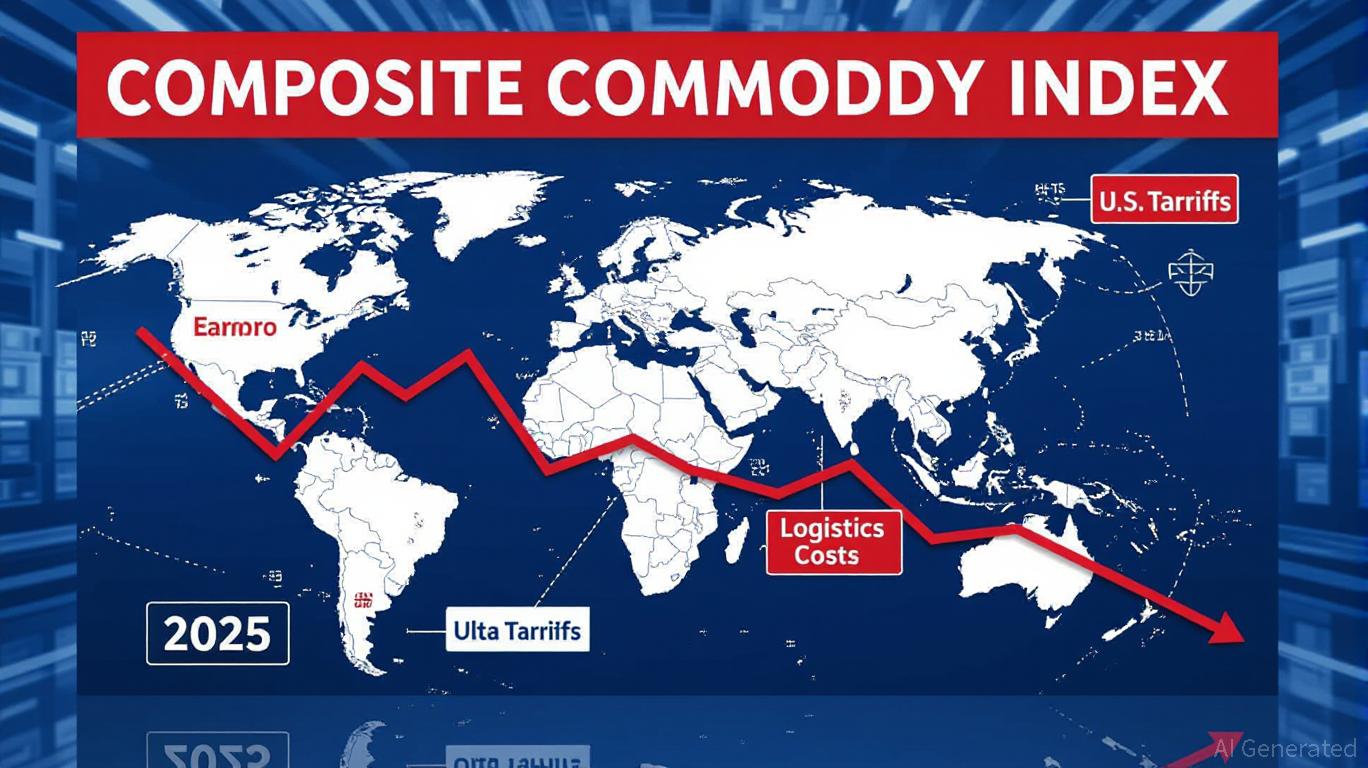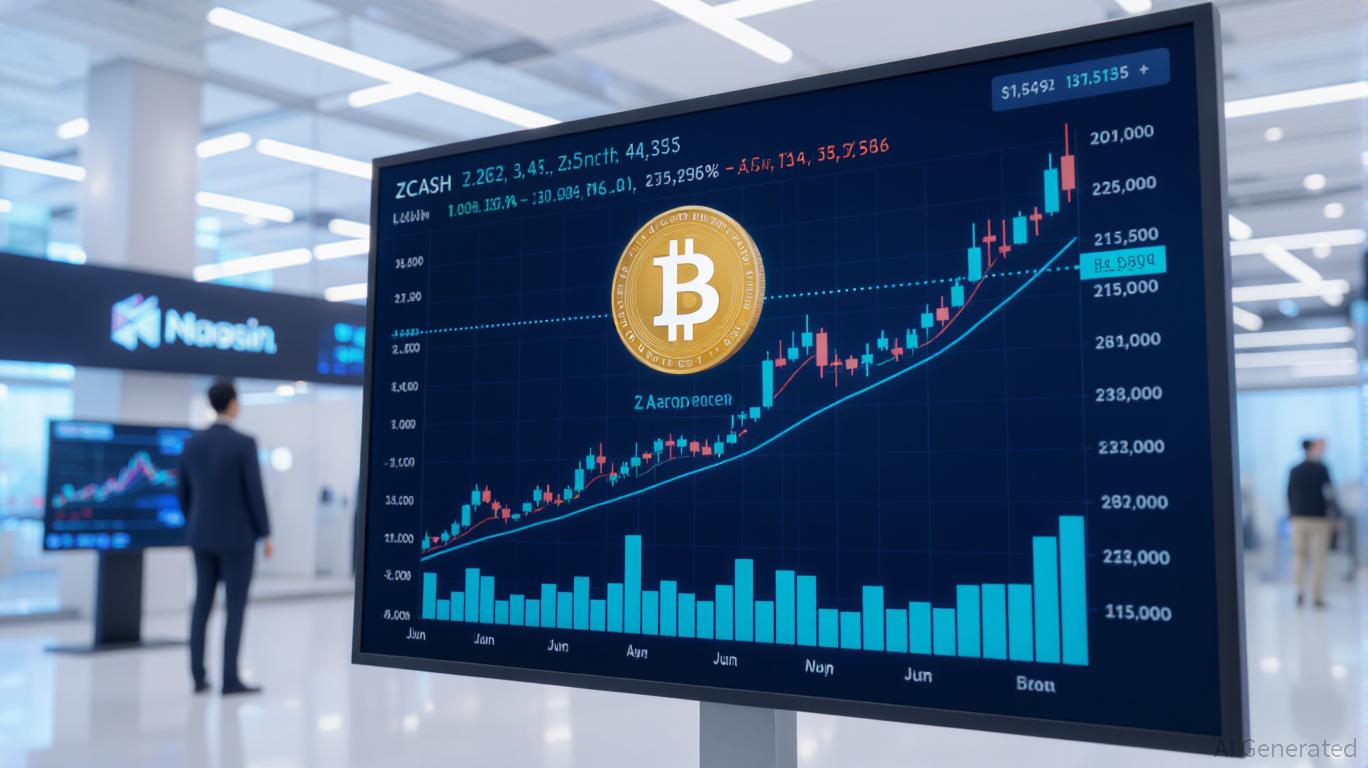COAI Price Decline: Reasons and Impact on Commodity Investors
- COAI's 2025 sharp decline reflects structural imbalances and shifting sentiment amid geopolitical/economic pressures. - Rising tariffs and supply chain costs, exemplified by IKEA's 32% profit drop, strain global commodity markets. - Speculative trading in precious metals contrasts with flat energy sectors, amplifying COAI volatility. - AI-driven metal demand and energy transition offer long-term upside despite compressed margins and policy risks. - COAI's decoupling from manufacturing PMI highlights need
In 2025, the Composite Commodity Index (COAI) saw a significant downturn, igniting heated discussions among market participants and experts. This steep fall, fueled by a mix of persistent supply-demand mismatches and changing investor sentiment, highlights the vulnerability of global commodity markets in the face of ongoing geopolitical and economic challenges. For those investing in commodities, grasping the underlying drivers and wider consequences is essential for navigating these turbulent conditions.
Structural Changes: Tariffs, Rising Costs, and Supply Chain Strains
The downward trend in the COAI is closely tied to escalating tariffs and increasing costs of raw materials, both of which have put pressure on international supply chains. For example, Inter IKEA Group reported a 32% drop in annual net profit in 2025, largely due to higher U.S. tariffs that raised commodity and shipping expenses, according to a
Additional structural hurdles, such as the costs associated with the energy transition and persistent inflation, have made matters worse. For instance, although the forged automotive parts sector is projected to grow at a 4.5% annual rate through 2031, it still faces indirect challenges from rising material costs, as highlighted in a

Speculation and Increased Market Fluctuations
Speculative trading has further intensified the COAI’s swings. In the third quarter of 2025, commodity trading advisors (CTAs) and algorithm-driven strategies spurred gains in precious metals such as gold and silver, fueled by demand from AI applications and a weakening U.S. dollar, as noted in a
The CFTC’s Commitments of Traders (COT) report sheds light on these trends. Non-commercial traders in S&P 500 mini-futures have taken on increasingly optimistic net positions, reflecting strong confidence in equities, as reported by the
What This Means for Commodity Investors
The recent fall in the COAI brings both challenges and potential rewards. Investors face tighter profit margins and ongoing geopolitical risks. Yet, long-term opportunities exist in areas such as AI-driven metal demand and the shift toward new energy sources. For example, gold and copper reached new highs in Q3 2025, as mentioned in the Schroders Q3 2025 review, indicating that commodities linked to technological progress may outperform more traditional sectors.
Nevertheless, the absence of a strong connection between the COAI and global manufacturing PMI figures complicates investment strategies, as pointed out in the Global Newswire report. While manufacturing in fields like automotive parts remains healthy, the COAI is more reactive to speculative trading and trade policies. This gap highlights the importance of building diversified portfolios that balance exposure to struggling sectors with investments in rapidly growing commodities.
Summary
The COAI’s price slump in 2025 reflects deeper structural and speculative influences. Tariffs, inflation, and automated trading have created a highly unpredictable market where traditional metrics like PMI are less reliable. Investors must adopt a sophisticated approach—managing short-term risks while seeking long-term gains from trends in AI and energy transformation. As the market continues to shift, closely monitoring both policy developments and speculative activity will be crucial.
Disclaimer: The content of this article solely reflects the author's opinion and does not represent the platform in any capacity. This article is not intended to serve as a reference for making investment decisions.
You may also like
The Unexpected 150% Jump in DASH: Trigger for Growth or Just a Hype?
- DASH cryptocurrency surged 150% in June 2025 via tech upgrades and pro-crypto policies, defying market caution. - DoorDash stock (-17.83% in one day) and Dash crypto must be distinguished despite shared ticker symbol, per Bitget/OKX. - Institutional adoption (Aster listing, 120% open interest rise) and retail hype around privacy features drove DASH to 3-year highs. - Regulatory scrutiny of privacy coins and competition from Monero/Zcash pose risks to Dash's market position, OKX warns. - DASH's rally refl

Zcash Halving and Its Impact on Cryptocurrency Investors: Examining On-Chain Activity and Market Reactions After the Halving
- Zcash's 2024 halving reduced block rewards by 50%, tightening its deflationary supply model and lowering annual inflation to 4% by late 2025. - Despite muted initial price reactions, ZEC surged 92% by Q4 2025 driven by regulatory clarity, institutional adoption, and network upgrades. - Privacy-focused adoption grew significantly, with shielded transactions reaching 27% of activity in 2025, supported by user-friendly tools like Zashi and CrossPay. - Investor sentiment shifted from skepticism to strategic

Zcash (ZEC) Sees Price Rally in Early November 2025: Institutional Demand and Protocol Enhancements Fuel Growth
- Zcash (ZEC) surged 400% in early November 2025, driven by institutional adoption and protocol upgrades, reaching $730 and a $8.9B market cap. - Electric Coin Company’s Q4 2025 roadmap enhanced privacy and usability, while BitMEX’s Arthur Hayes added ZEC to his family office’s top holdings. - Zcash surpassed Monero in market cap, leveraging optional privacy features and ZKPs for institutional compliance and adoption. - Protocol upgrades like Orchard’s 4.1M shielded tokens and Zashi wallet improvements add

ZEC rises 41.15% over the past month as whales adjust their holdings and Maelstrom reallocates funds
- ZEC dropped 4.94% to $568.08 on Nov 9, 2025, but remains up 914.96% annually amid whale position adjustments. - Large holders on Hyperliquid reduced long positions by 75%, slashing unrealized profits from $12M to $200K. - Maelstrom Fund's Arthur Hayes allocated ZEC as second-largest holding, citing its 41.15% monthly surge and privacy-focused fundamentals. - Zcash's $8.9B market cap growth reflects rising demand for privacy coins, with 139% 24-hour trading volume increase. - Proposed backtest aims to ana